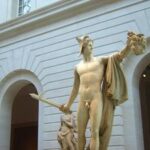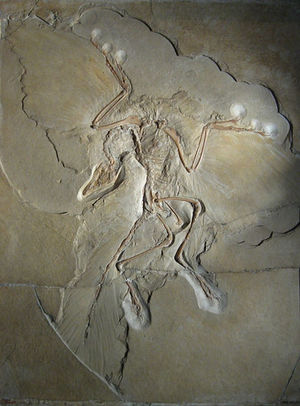Quetzalcoatl is one of the most ancient of all North American gods. He is associated with the Mesoamerican period of history and believed to be solely an Aztec deity under that name.
However, it appears that many cultures before and after him, also recognized similar deities under different names, much the same way as the Greeks and Romans have common gods and goddesses with very different names. This should come as no surprise to those who study mythology, for no where else does duality take on this kind of common structure.
The Aztec believed Quetzalcoatl to be the creator god, responsible for the formation of the sun, the moon, and the stars. He was, however, not just an earthly god. He was also associated with other planets like Venus and Mercury.Quetzalcoatl is also often referred to as The Feathered Serpent and he is typically pictured as such in any art pertaining to ancient Aztec and Mayan cultures.
The choice of a snake-like appearance for such an important deity might seem odd to us. However, to the people of the Mesoamerican period, the snake represented earth’s fertility and vegetation. The “feather” relation to the serpent (and god) came from another highly cherished icon of the era – – the quetzal – – an exotic bird of the period.
Over time Quetzalcoatl took on the roles and attributes of other gods, basically incorporating them directly into himself. Eventually, he also became associated with other forces of nature like the air, wind and rain.
The Toltec adopted Quetzalcoatl in human form; a man with god-like attributes. Therefore, over time, rulers of great civilizations like the Toltec and the Aztec did not find it strange for their rulers to claim this god-like status.
Perhaps the most famous case of this kind of merger came with the ruler known as Ce Acatl Quetzalcoatl. He ruled between 923 and 947. During that time, the legends associated with the man and the capabilities associated with the god merged totally to make it virtually impossible to tell one from the other.
Even the Catholic Encyclopedia seems uncertain of the origin and reality of Quetzalcoatl. They believe that he might have been a Norwegian Christian priest. Others associated him with Thomas the Apostle. He even gets mentioned in conjunction with the god Vishnu of the Hindu trinity.
There are many stories that suggest that the Aztec emperor Montezuma believed that Hernan Cortes represented the second coming of the god Quetzalcoatl. However, there are no solid historical documentation that validate that claim. If anything, the rumor might have been started by Cortes himself in an effort to impress King Charles V of Spain.
Eventually, however, the attributes of Quetzalcoatl did spread into the land that would eventually become known as the United States. There are marked similarities between the Aztec myths of Quetzalcoatl and those of Pahana, a deity of the Hopi tribes of Arizona.
There is some truth to the notion that the Hopis mistook early Spanish conquistadors as gods. Pahana – – the “lost white brother” – – certainly seemed an apt description for those who came to their land. Perhaps it was that mistaken identity that eventually flowed backward to the Aztecs to inevitably link Cortes and Montezuma. It is, of course, unlikely that we will ever know for certain.
Many myths surround the god Quetzalcoatl and how he disappeared from his people. In one, he was seduced by the goddess Tezcatlipoca, but regretted their mating and threw himself into fire as punishment for his sins.
In another, he was driven into exile by another deity, the god of the night. Still other myths have been willingly abandoning his people on a raft of snakes.
Whichever, if any, version that one believes, the end result is the same. It is said that he will one day return in the form of a light-hair and light-skinned, bearded man.
While this might explain why some believe in the Montezuma misinterpretation that Cortes represented the returned gold, there are some holes in the theory. The Spanish are rarely light skinned and almost never have light hair. Cortes himself had a swarthy complexion and dark hair, although he did, indeed, sport a beard.
Some say that Quetzalcoatl has not yet returned but will someday. That prediction sounds familiar to me as it most assuredly does to several other religions. That leaves to me to ponder whether or not, with all of our cultural differences, are we not – – at heart – – very much the same?




